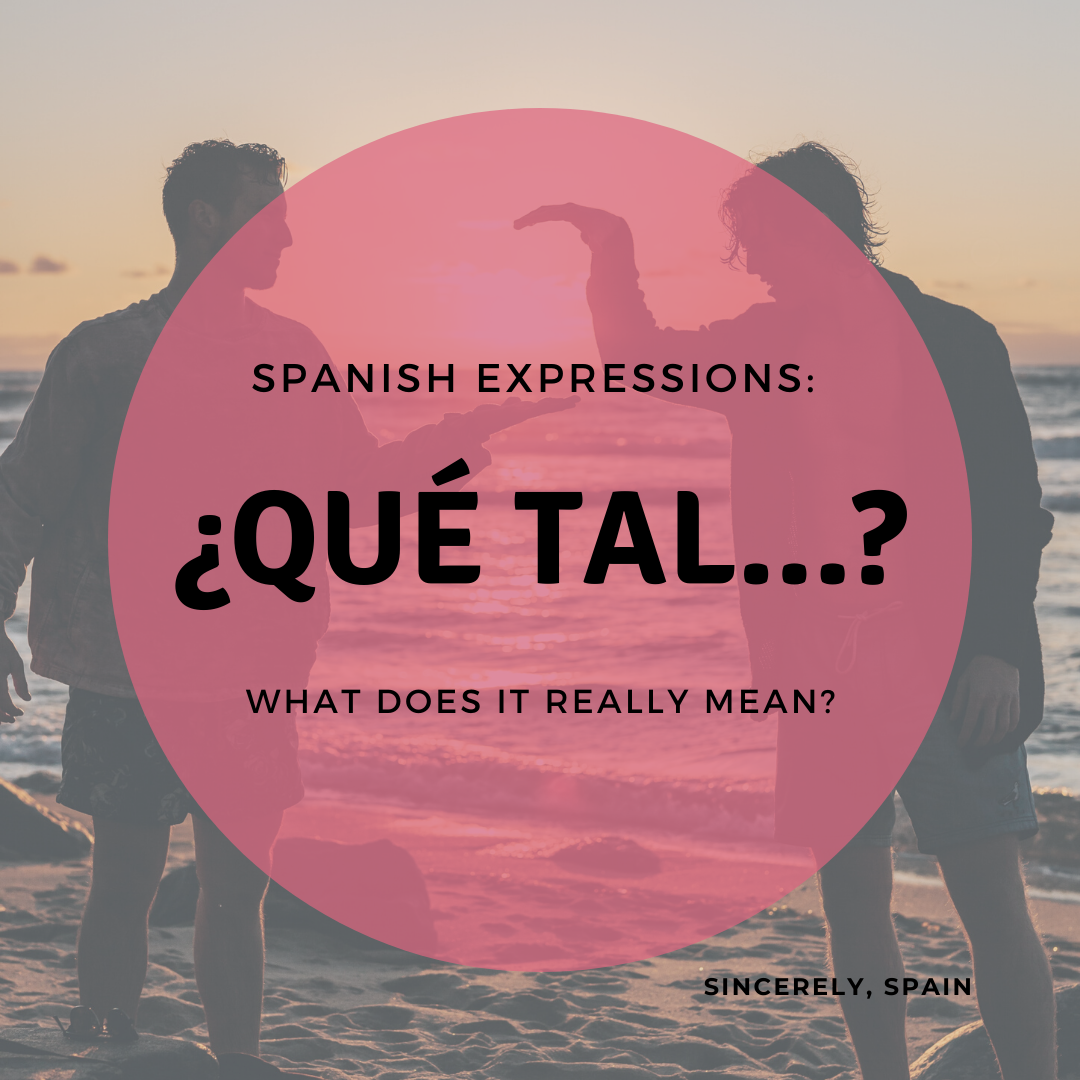Topic translate que tal: Discover the nuances of "Translate Qué Tal," a gateway to enriching your Spanish communication and understanding cultural context.
Table of Content
- How do I translate que tal into English?
- What Does \"Qué Tal\" Mean?
- Usage in Questions and Conversations
- \"Qué Tal Si...\" for Future Suggestions
- Comparison with \"Cómo Estás\"
- Nuances in Formality and Context
- Additional Uses and Contextual Applications
- Common Responses to \"Qué Tal\" and \"Cómo Estás\"
- Conclusion and Tips for Effective Usage
- YOUTUBE: Using Tal in Spanish | The Language Tutor Lesson 116
How do I translate que tal into English?
To translate the Spanish phrase \"que tal\" into English, you can follow these steps:
- Open a reliable translation tool or website like Google Translate or DeepL.
- Enter \"que tal\" in the source language box (Spanish).
- Select English as the target language.
- Click the translate button or hit enter.
- Review the translation provided by the tool.
The translation of \"que tal\" in English is \"How are you?\". It is a common way to greet someone in Spanish.
What Does \"Qué Tal\" Mean?
\"Qué Tal\" is a versatile Spanish phrase commonly used in conversations. It\"s a colloquial greeting akin to \"How\"s it going?\" or \"How are you?\" but its usage extends beyond simple inquiries about one\"s well-being. Depending on the context, \"Qué Tal\" can probe deeper into a person\"s life or introduce a suggestion for future activities. This expression reflects the richness of Spanish conversational nuances, making it a valuable addition to any language learner\"s repertoire.
Usage in Questions and Conversations
\"Qué Tal\" serves as a flexible tool in Spanish dialogue, adapting to various conversational contexts. Typically initiating inquiries, it can precede nouns to ask about one\"s day, experiences, or the wellbeing of acquaintances. When paired with verbs, it explores actions or conditions, offering a friendly, informal way to engage. Additionally, its use in propositions with \"si\" (if) suggests hypothetical or future scenarios, making conversations dynamic and interactive.

\"Qué Tal Si...\" for Future Suggestions
The phrase \"Qué Tal Si…\" is an engaging way to propose ideas or suggest future activities. It translates to \"What if…\" or \"How about…\" in English, adding a layer of anticipation and possibility to conversations. This construction opens up discussions about potential plans or hypothetical situations, fostering a collaborative and creative dialogue among speakers.

Comparison with \"Cómo Estás\"
While \"Qué Tal\" and \"Cómo Estás\" are both used to inquire about well-being, they have subtle differences in formality and context. \"Qué Tal\" is more informal and versatile, often used in various aspects of conversation. On the other hand, \"Cómo Estás\" is a direct translation of \"How are you?\" and is used in more formal or straightforward settings. Understanding these nuances can enrich your communication skills in Spanish.

_HOOK_
Nuances in Formality and Context
The phrases \"Qué Tal\" and \"Cómo Estás\" showcase the richness of Spanish language by offering varying degrees of formality and context. \"Qué Tal\" is typically informal, suitable for casual conversations among friends or peers. In contrast, \"Cómo Estás\" caters to more formal interactions or when a polite inquiry about well-being is needed. Recognizing when to use each phrase can significantly enhance the quality and appropriateness of your interactions in Spanish-speaking environments.

Additional Uses and Contextual Applications
\"Qué Tal\" extends beyond basic greetings, integrating into diverse conversational scenarios. It can be used to inquire about specific aspects of someone\"s life, activities, or feelings, providing a conversational bridge to more in-depth discussions. Its adaptability makes it a favorite in casual and semi-formal dialogues, reflecting the dynamic nature of everyday communication in Spanish-speaking cultures.

Common Responses to \"Qué Tal\" and \"Cómo Estás\"
Responding to \"Qué Tal\" or \"Cómo Estás\" varies based on the context and the speaker\"s feeling. Typical replies range from expressing contentment to sharing a brief update on one\"s current state or mood. These responses foster a friendly dialogue, allowing conversations to flow smoothly and naturally in social or formal settings.

Conclusion and Tips for Effective Usage
Mastering \"Qué Tal\" and \"Cómo Estás\" enhances your conversational skills in Spanish. Recognize the context, match the formality of the setting, and respond genuinely. These phrases are more than just words; they\"re an invitation to connect and share, embodying the warmth and friendliness inherent in Spanish-speaking cultures.
Embrace the versatility of \"Qué Tal\" to enrich your Spanish conversations, bridging cultures and fostering deeper connections with every interaction.

Using Tal in Spanish | The Language Tutor Lesson 116
Experience the vibrant culture of Spain as you dive into the world of Spanish cuisine. From tantalizing tapas to mouthwatering paella, this video will transport you to the streets of Barcelona and satisfy your cravings for an authentic Spanish food experience.
READ MORE:
¿Qué tal la comida? (How\'s the food?)
Calling all food lovers! Get ready to tantalize your taste buds as we take you on a culinary journey exploring the diverse flavors of world cuisine. From exotic spices to comforting comfort food, this video will leave you inspired and ready to experiment in your own kitchen.






